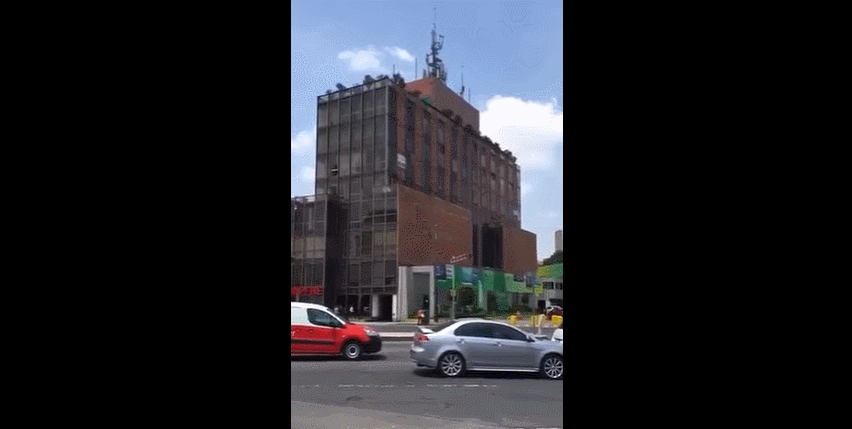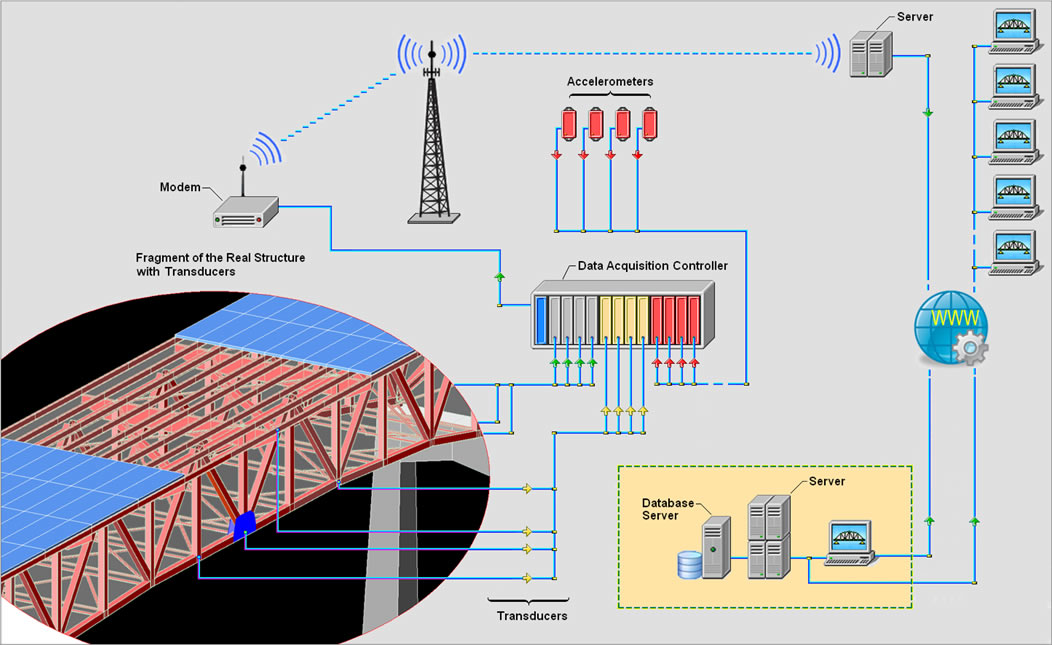Significance of Vibrational Modes
The amplitude of motion of a structure vibrating in its modes of vibration is much greater than the amplitudes of a structure vibrating at some arbitrary frequency. Thus, when a structure's mode of vibration is continually excited, the emphasized motion in the building could cause structural damage. Generally, the lowest frequency mode of vibration moves the most. Buildings with low natural modes, such as tall skyscrapers and bridges with long spans, experience the highest stresses and can be at the greatest risk of failure.
In the video below, a magnitude 7.1 earthquake in Mexico City excited the building's natural mode of vibration, causing it to sway back and forth for the duration of the quake. Although this building in particular didn't experience total failure, earthquakes can still cause cracking and weathering that weaken the structure overall, making it prone to later events. In addition, free furniture can move around, smashing walls and windows.

Video from: Credit
The following example features the Tacoma Narrows Bridge which collapsed after wind loads excited the torsional modes of the bridge's span. The fact that this event ended in failure highlights the impact that vibrational modes of structures can have.

Video from: Credit
However, while vibrational modes in structures can lead to disastrous events, they can be used for good as well. If we know the modes of vibration of a structure, then we know how the structure should react to excitements. If we excite the structure through small, non-damaging impacts and the structure reacts in a way we don't expect it to, this could signal some defect in the building. Action can then be taken accordingly before any damage is caused by a structural failure. This process is called Structural Health Monitoring (SHM).

Image from: Fynite Solutions
All of the above are examples of design factors that need to be taken into consideration during a structure's planning phase. Whether positive or negative, the modes of vibration of a structure can always affect the performance of a building. As such, the intrinsic vibrational properties of structures should always be analyzed.